What requirements should be considered?
To understand what kind of floor to make on the balcony, you need to understand the requirements that the floor covering must meet.
- Temperature differences... On a closed balcony, this is noticeably less, but even it is subject to these jumps, not to mention an unglazed one: the material must be resistant to heat and frost.
- Variable humidity... In some cases, even dampness, so the future balcony floor must be absolutely hydrophobic. And in the case of a balcony floor without insulation, where humidity meets cold air, which is also protected from fungus.
- Sun rays... It will be unpleasant if, after the first summer season, the coating deforms or burns out in the sun - therefore, for southern balconies, choose materials that are devoid of this drawback.
On the picture tiles on the loggia with panoramic glazing
What is the best material for the floor?
So, the floor on the balcony should be moisture-, frost-resistant, UV-resistant. There are not many options that match the given specifications.
Laminate
Let's start with most controversial flooring. Laminate It is known for not liking high humidity - under constant exposure to water, it swells, becomes a "house", loses its appearance without the possibility of restoration.
Accordingly, laminated panels are not suitable as a topcoat for open or cold loggias. But they will fit into the interior of a warm glazed balcony.
pros |
Minuses |
|---|---|
| Stylish appearance, the interior looks expensive. | Fear of moisture. It will not even withstand high levels of humidity, not to mention raindrops. |
| Many designs - from imitation parquet to old boards or stone. | Requirements for leveling the base, careful preparation. Otherwise, after a short time, it will start to creak. |
| Simplicity of styling. You can even lay it yourself. | Unnaturalness. Inexpensive glued material can release harmful substances. |
| Wide range of prices - you can find both budget and premium options. |
Tile
One of the most reliable floor materials on the balcony. The resistance of the tile to various kinds of influences opens up the possibility of using it as a floor covering for an open balcony.
Benefits |
disadvantages |
|---|---|
| Resistant to temperature extremes. Ceramics or porcelain stoneware not demanding on operating conditions. | Cold. For ceramics, floor heating is often done. |
| Hydrophobic. Even pools are laid out with tiles, so balcony precipitation is guaranteed not to harm her. | Difficult to lay. To lay a flat floor, you need to have enough experience. |
| Practical. Care is as simple as possible: wash the tiles you can do anything. | Insecure. Some species become slippery when exposed to water. |
| Long lasting.Due to its high strength, it can withstand severe mechanical stress. | |
| Beautiful. The choice of decorative collections scatters eyes: it will not be difficult to choose colors and textures to your liking. |
It is worth highlighting separately the presence of seams: yes, the tile itself is not afraid of water and frost, which cannot be said about grouting. In addition, the seams will have to be periodically updated so that the floors on the balcony in the apartment look neat.
Take a look recommendations for choosing the color of grout for tiles.
Linoleum
Not all types can be put on the floor of the loggia, suitable ones meet the following characteristics:
- Water resistance... Look for views on a smooth rubber backing rather than felt.
- Durability... The thicker the material, the longer its service life.
- UV resistance... There are models covered with a special protective film - they do not fade in the sun.
Positive and negative aspects of this type of sex:
Dignity |
disadvantages |
|---|---|
Ease of maintenance. It is easier to wash the canvas without seams than with seams. |
Vapor tightness. Fungus may form between the floor and the concrete screed. |
| Simplicity, speed of installation. A suitable option for those who plan to decorate the loggia with their own hands. | Unnaturalness. Unlike natural ceramics, cheap options give off a pungent smell at first. |
| Relatively low screed requirements. The floors on the balcony for linoleum do not require high-quality leveling, 100% dust removal. | Fragility. Again, comparing with porcelain stoneware or tiles, linoleum will last much less. |
| Profitable price. Covering the floor with linoleum is cheaper than laminate or tiles. | |
| Extensive assortment. Textures, shades, colors are practically unlimited. |
Terrace board
If you want to lay the floor on an open balcony with a wood texture, but the previous options are not suitable, pay attention to the decking.
Terrace (or deck) board is made on the basis of wood-polymer composites, due to which it has a number of advantages over massive boards.
pros |
Minuses |
|---|---|
| Resistant to weather conditions. Snow, heat, pouring rain, even an open balcony will not care. | There is a high probability of running into a fake that does not meet the declared qualities. |
| Long service life. Under suitable conditions, the structure will last 15+ years. | Fade in the sun even with glazing. |
| Safety. The wood does not slip even when exposed to water. | Installation work requires basic knowledge, it is better to entrust it to a professional. |
| Decorativeness. Lamellas are available in various colors; they do not need to be coated with special impregnations or painted. | High price. It pays off in a small area of the premises. |
In the photo, a terrace board in the interior
Soft floor
This type of flooring materials includes carpet, as well as artificial turf. With their help, you can create a living space for work and rest, but what is the peculiarity of the application?
Benefits |
disadvantages |
|---|---|
| Pleasant to the touch. It is pleasant to go out barefoot on the soft loggia. | Carpet can get moldy from water, only suitable for dry types of balconies. The lawn is devoid of this minus. |
| Suitable for decorating the lounge area. No furniture needed: lay a carpet, throw in some pillows. | Compatible only with the most expensive underfloor heating - infrared. |
| Low requirements for the base of the floor on the balcony. Large holes, of course, will have to be aligned, but there is no need to bring them to perfection. | Accumulates dust that is difficult to remove. Not suitable for allergy sufferers. |
The photo shows a covering made of artificial grass
Selection recommendations for different types of balconies
The main factor influencing the decision of what to put on the floor on the balcony is its type.
Open
Due to the constant influence of the external environment, the choice is extremely limited. Tile or porcelain stoneware, terrace board will do. Sometimes a self-leveling floor is used.
In the photo, an open space design option
Heated and glazed
The simplest option that does not put forward special requirements for the floor: the coating can be anything, from laminate to carpet. At the same time, the base can be leveled with concrete, plywood or chipboard.
Unheated and glazed
A cold glazed balcony is a little more difficult: choose hydrophobic materials: linoleum, tiles, decking.
Can a warm floor be used?
According to safety rules, it is forbidden to transfer a water heating radiator to the balcony.... Therefore, a reliable way to make the space suitable for winter use is underfloor heating on other types.
Important! It is pointless to lay the heating system on an open loggia or balcony without insulation, so the first thing to do is to prepare the room - to strengthen the parapet, install high-quality double-glazed windows, additionally insulate the walls, and lay waterproofing.
Warm floors are:
- Aquatic... They are connected to heating devices or a heating network, therefore they cannot be called autonomous. Since they are mounted under concrete, the height from floor to ceiling will decrease by the entire thickness of the screed. They are considered economical, but unsafe: pipes can leak, and for repairs, the entire structure will have to be broken. Incompatible with linoleum, carpet, wood floors.
- Electrical... There are cables that are also filled with cement or mats - they are put on glue without being covered with a screed. It works autonomously, you can set the desired temperature by adjusting the energy consumption. Compatible with all types of flooring, but artificial ones can release chemicals when heated.
- Infrared... Provides the most efficient, uniform heating, but can damage decorative flooring if used incorrectly. Requires a solid, even base, not recommended for use with carpet, linoleum.
You can use a warm floor on loggias, the main thing is that it is compatible with the finish.
Beautiful design ideas
Does using sample tiles seem boring? Combine it, for example, with a lawn: artificial grass will help create a real garden on the loggia.
The second option is to choose an unusual tile. With abstract black, white patterns, color inserts, custom shapes and sizes.
If the balcony is combined with a room, you can divide the spaces with different materials: fortunately, experts know how to make beautiful joints between tiles and laminate.
On the picture combining tiles with laminate
Rooms with a wooden or soft floor look the most comfortable. The loggia is a great place for a home lawn: this solution will be appreciated by children and adults.
The small area of the loggia is an advantage that allows you to choose high-quality material without spending a lot of money. Do not skimp on the coating: let it be a little more expensive, but you will not have to redo the repair in a short time.


 10 practical tips for arranging a small kitchen in the country
10 practical tips for arranging a small kitchen in the country
 12 simple ideas for a small garden that will make it visually spacious
12 simple ideas for a small garden that will make it visually spacious
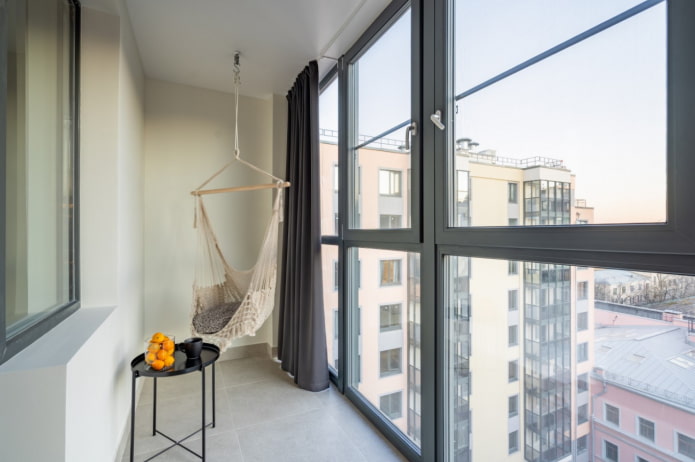
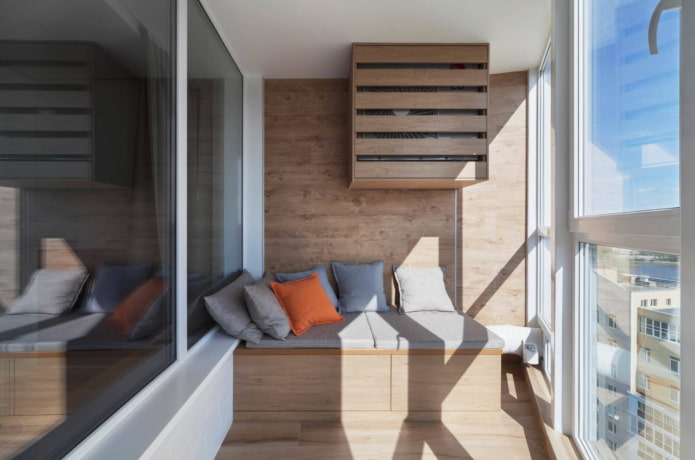
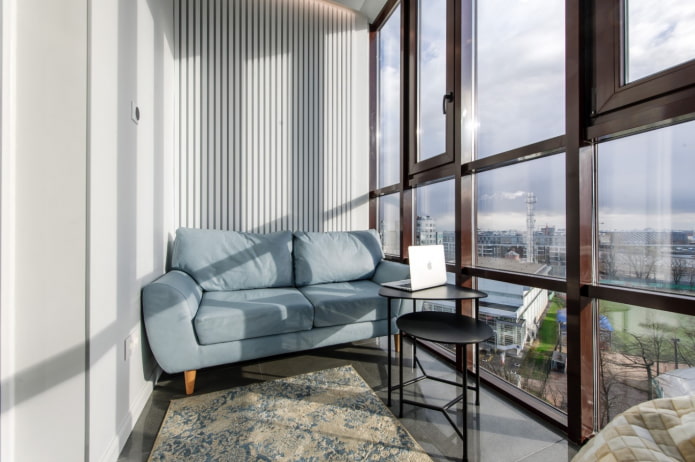
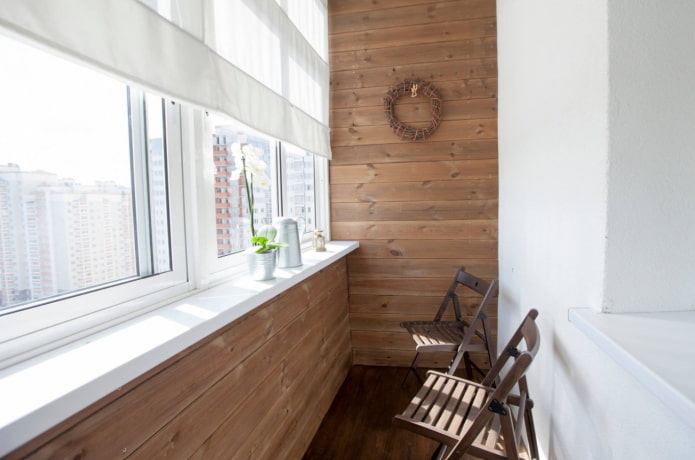
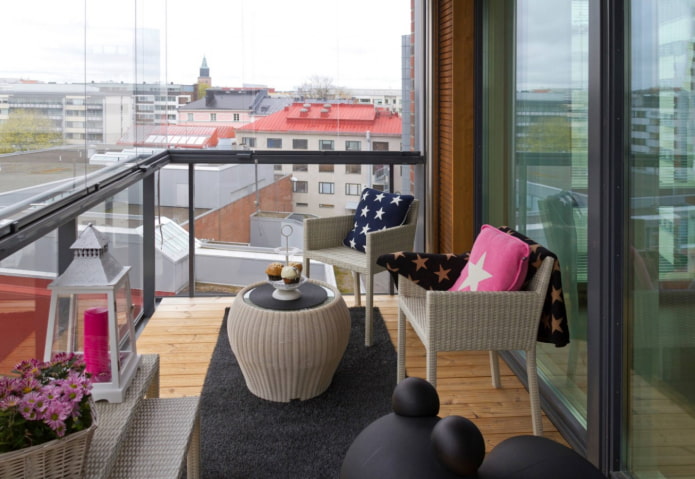
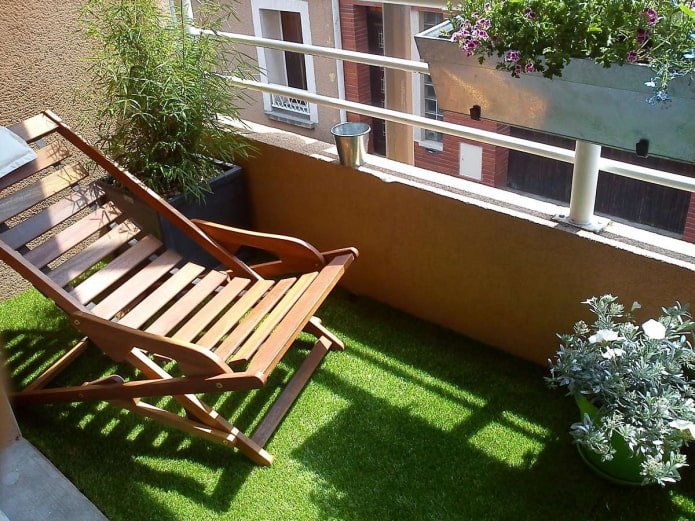
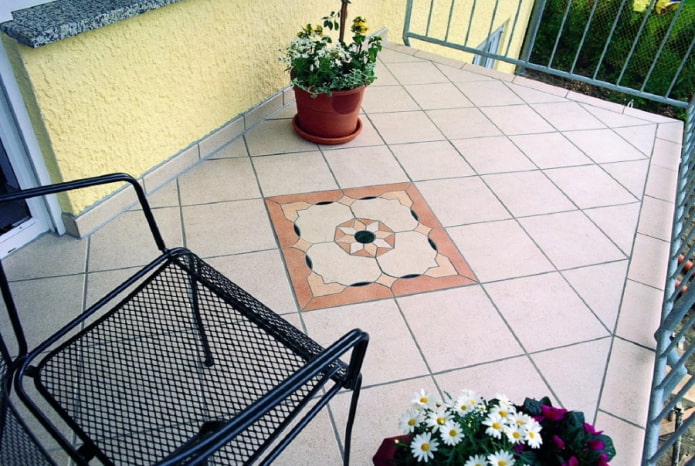
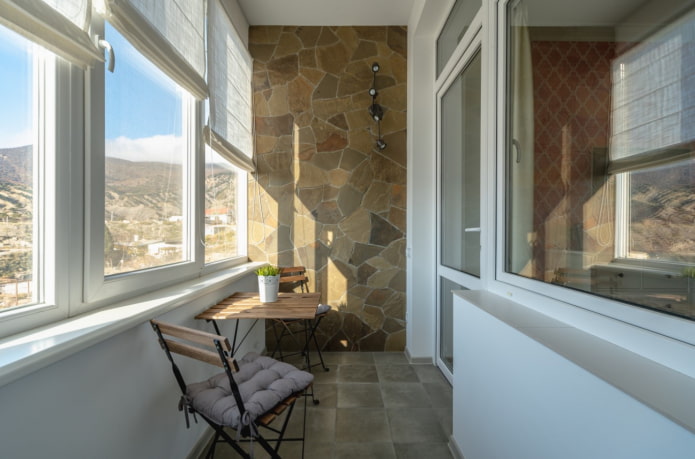
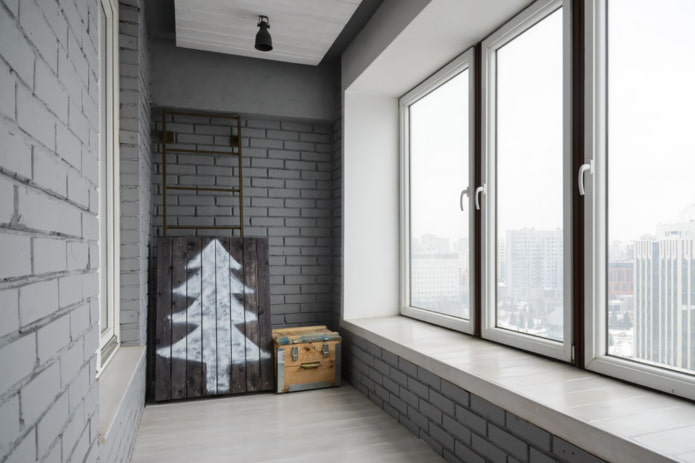

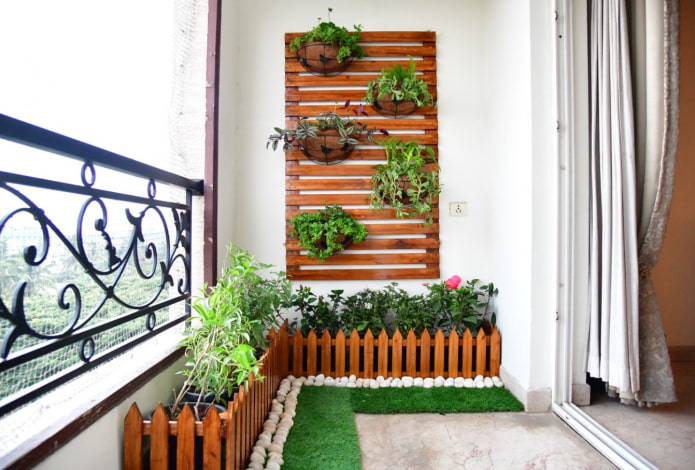
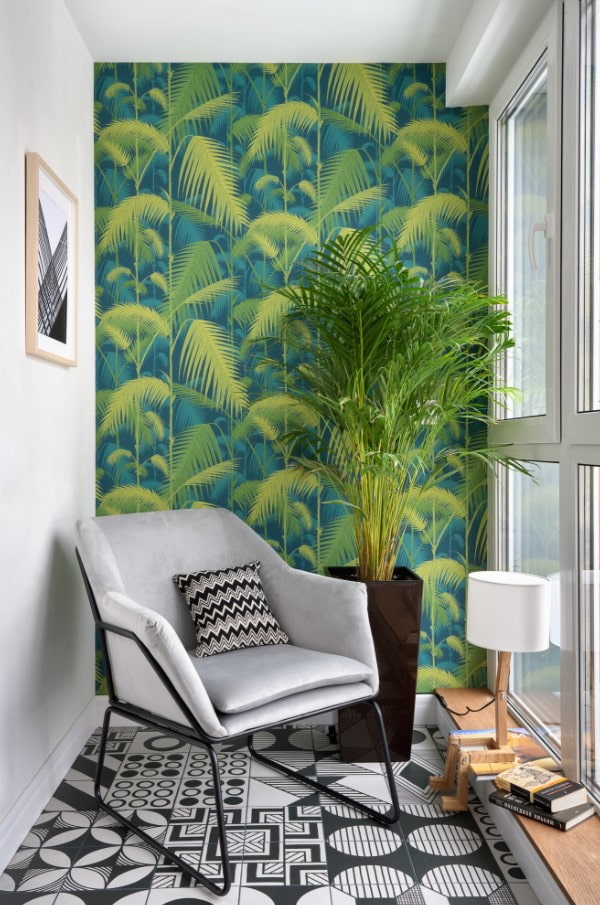
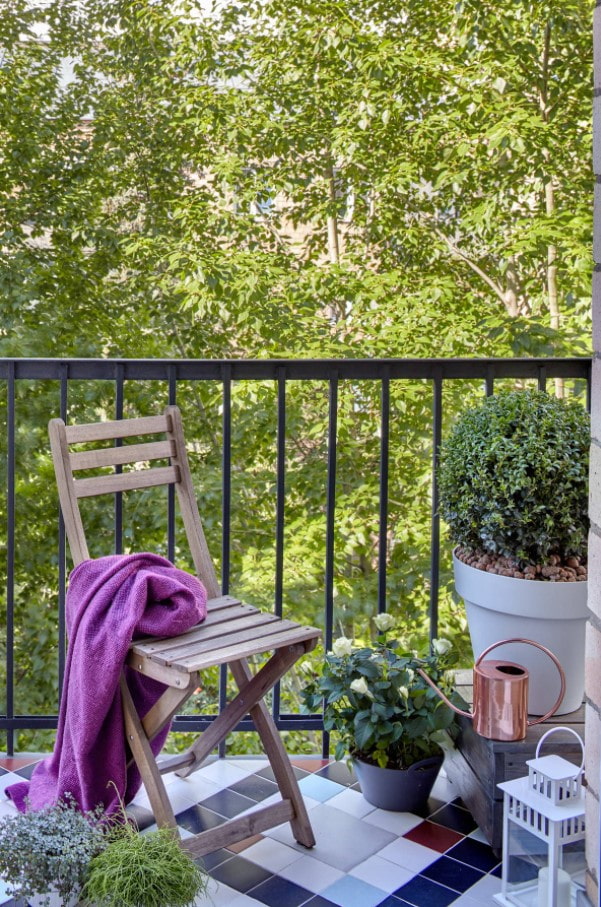

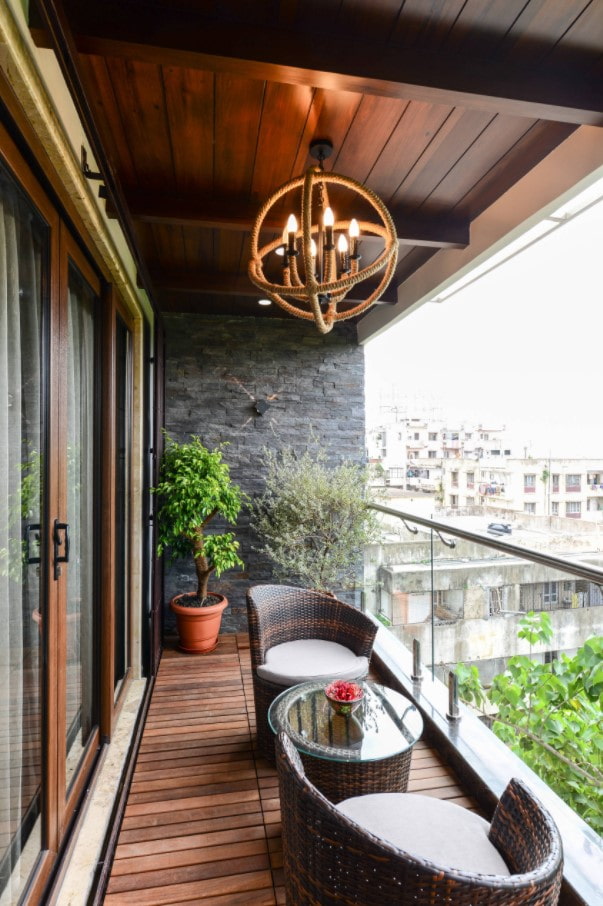
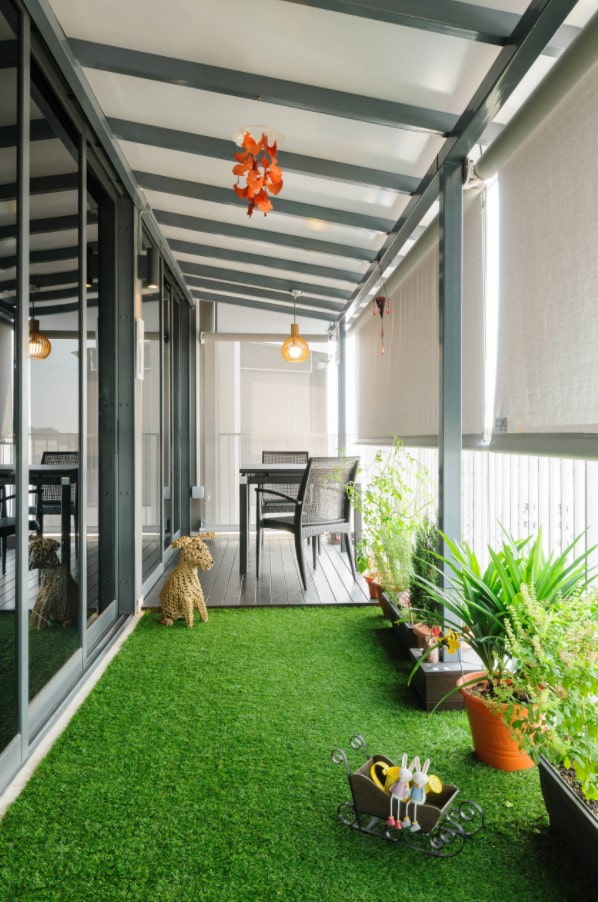
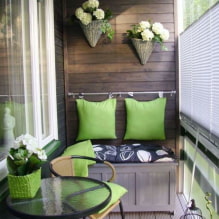
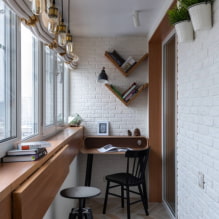
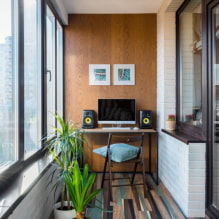
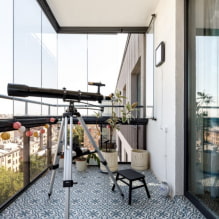
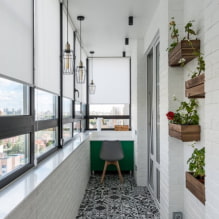

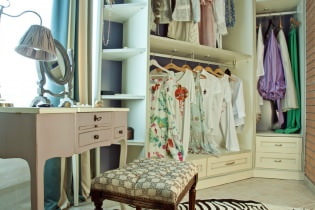 Balcony interior with dressing room
Balcony interior with dressing room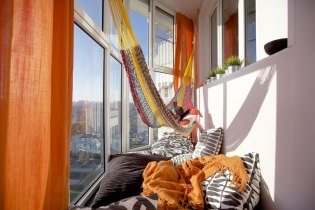 Loggia design 7 meters with hammock
Loggia design 7 meters with hammock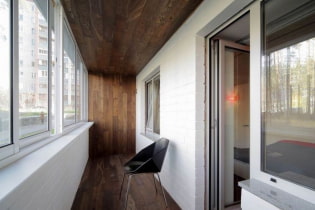 Ceiling decoration on a balcony or loggia: types of materials, color, design, lighting
Ceiling decoration on a balcony or loggia: types of materials, color, design, lighting Balcony and loggia design: design ideas, decoration, choice of color, furniture, style and decor
Balcony and loggia design: design ideas, decoration, choice of color, furniture, style and decor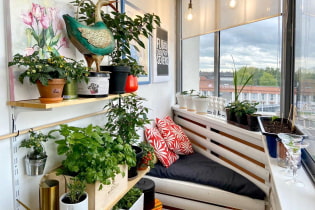 How to equip a balcony - cozy ideas for every taste
How to equip a balcony - cozy ideas for every taste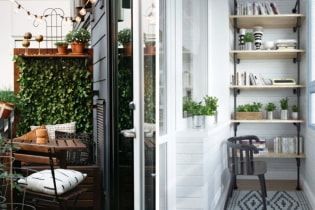 How to decorate a small balcony beautifully
How to decorate a small balcony beautifully